Santa Cruz is the most populated island in the Galápagos Islands and the most common way to enter into the islands from mainland via the Baltra airport. We used Santa Cruz as our first base for land-based day-tours to nearby islands, including both North Seymour Island and Bartolomé Island. However, Santa Cruz itself also had a great deal of wildlife as well as a glimpse into local life.

Puerto Ayora
The main town of Puerto Ayora in southern Santa Cruz is the most populous town in the Galápagos Islands. We stayed at a hostal here as well as booked all of our day-tours with local agencies, the best bet at the most affordable prices. Despite being the “commercial hub,” Santa Cruz has the typical laid-back island lifestyle. Businesses open late, lunch break siestas are common, and locals can often be seen hanging out with friends.

When we were not out on a tour, we explored the small town, usually by going down to the pier. Even in the busy pier (“busy” by Galápagos’ standards), we saw plenty of wildlife co-existing with humans. As usual, there were plenty of sea lions sleeping on the pier, sometimes blocking the way for people arriving by boat. Marine iguanas lined the streets – they were so common we sometimes had to watch our step.
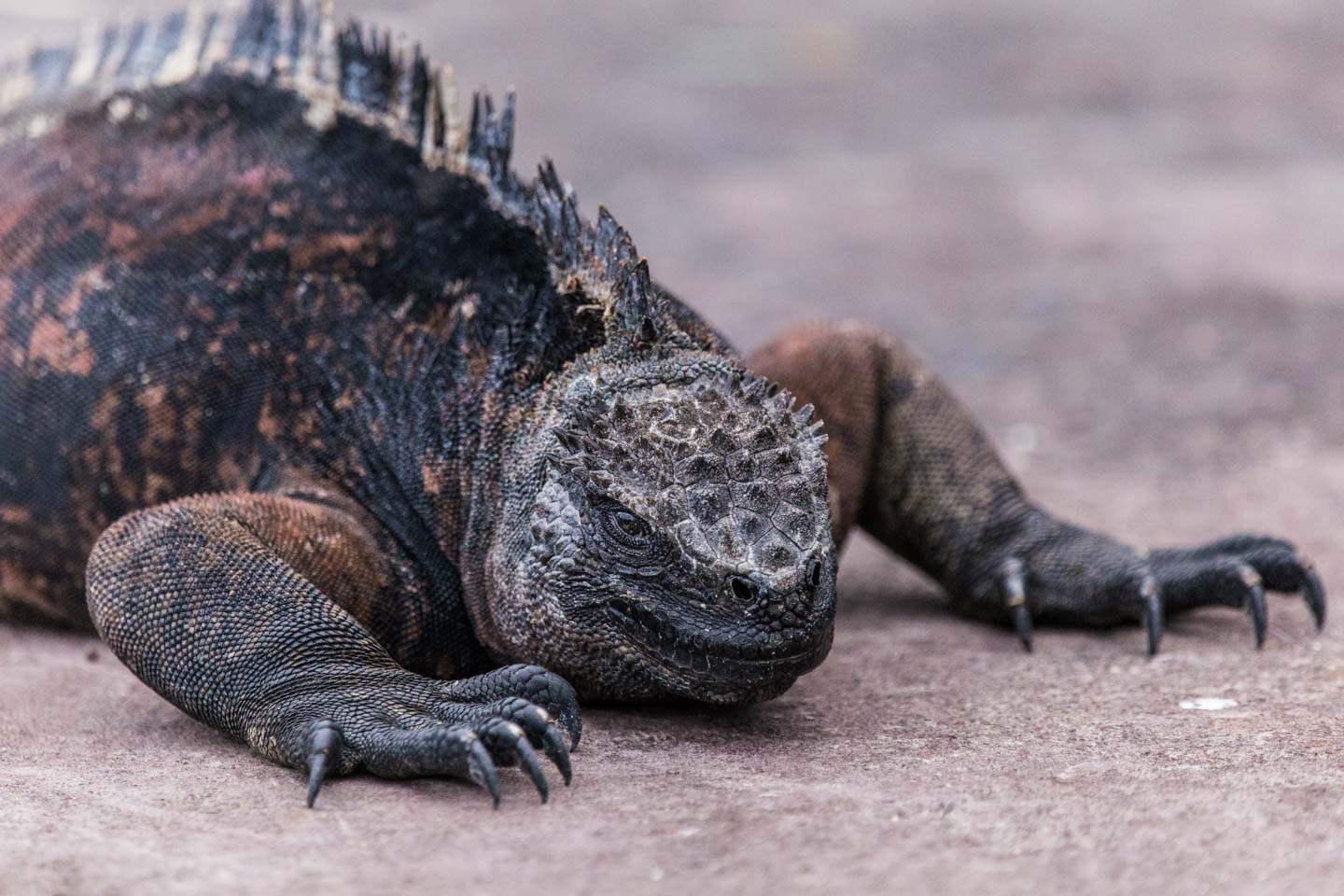
Brown pelicans circled the pier, looking for fish, catching scraps from local fishermen, or settled into their mangrove habitat.

Lots of sally lightfoot crabs lived amongst the rocks by the pier, dots of red spread and moving against the black.
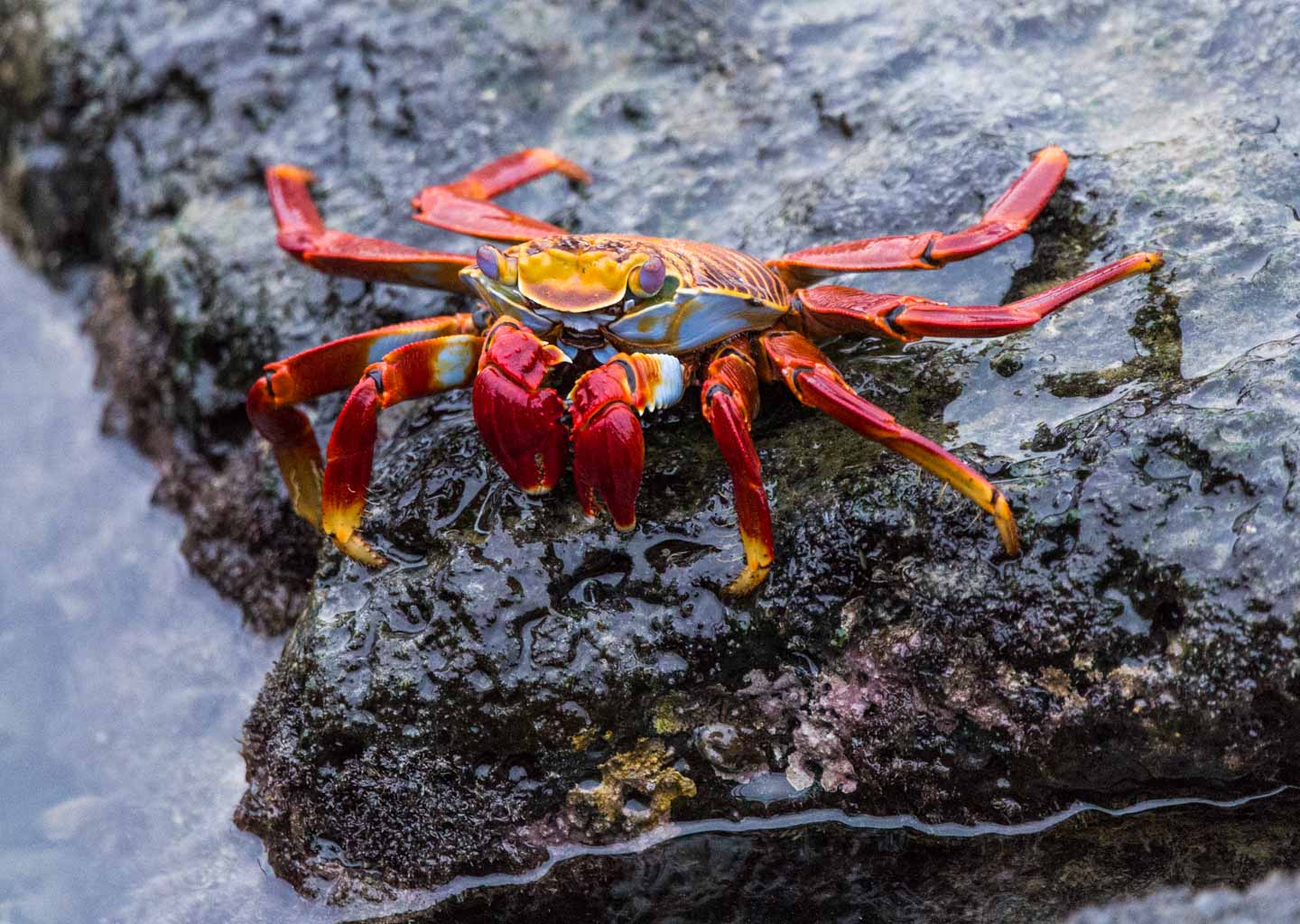
Another area of town we found interesting was the fish market, where brown pelicans could also be spotted looking for scraps. Sea lions also frequented this place, chilling with the other locals here to pick up fresh seafood or fish.

At night, we’d often go to the night market and have freshly-caught seafood processed at the fish market such as grilled fish or lobster cooked for us for dinner. It was very lively!

Life in Puerto Ayora is probably as chaotic as life in the Galápagos Islands gets. Coming from a city life, this is quite a change. Especially considering there are wildlife nearby wherever you go!
Galápagos Giant Tortoises
Giant tortoises were the top wildlife we wanted to see here in the Galápagos Islands – they are the namesake, after all. The Charles Darwin Research Station was a good place to start. It was here we learned about the history of wildlife on the islands, as well as all the research and conservation efforts scientists from around the world are conducting here in the Galápagos Islands.
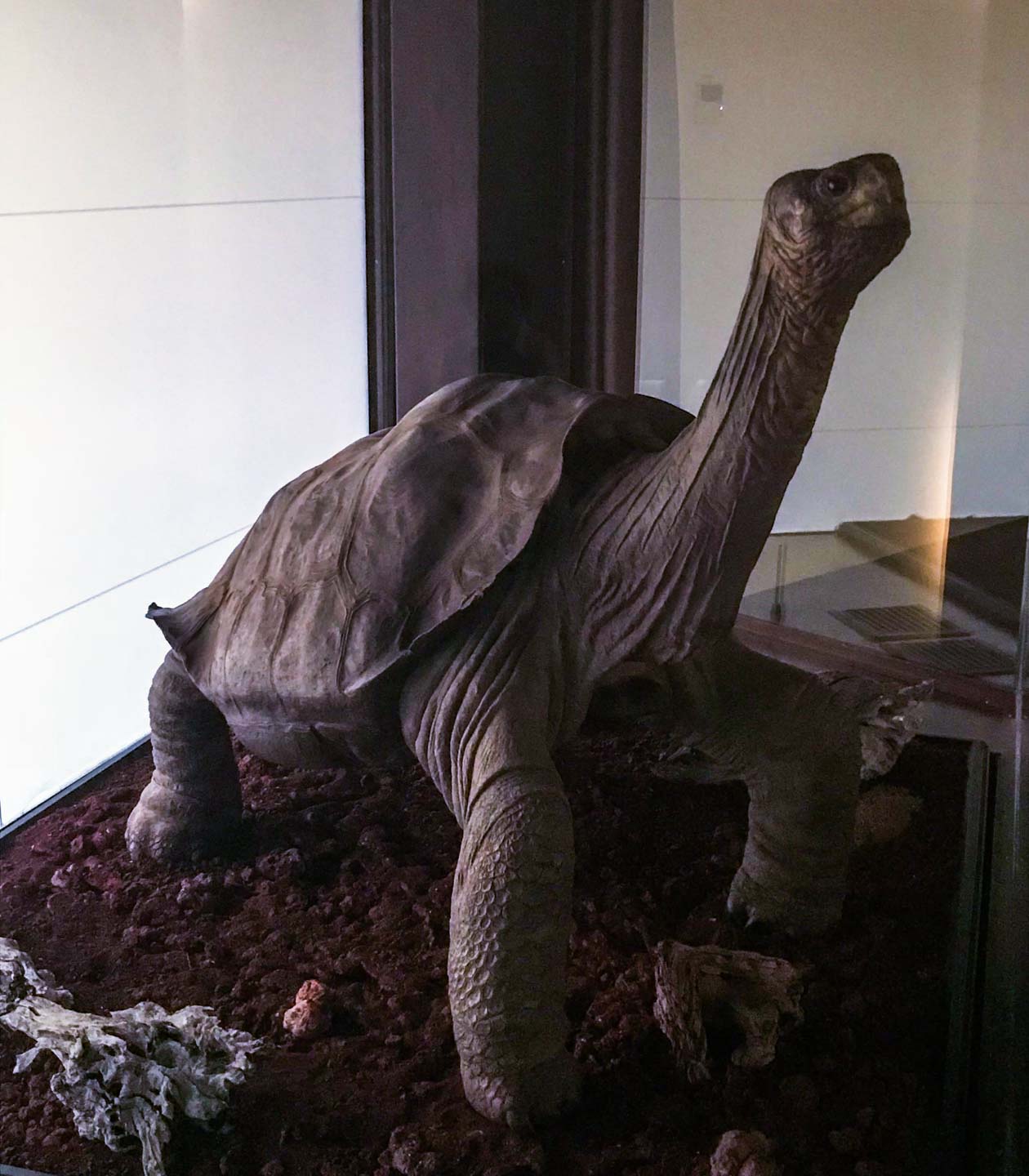
Of course, the famous Lonesome George was there, too. Lonesome George passed away in 2012, the last of his kind (giant tortoise from Pinta Island), so now visitors can see his taxidermy carefully preserved. It’s too bad we never got to meet Lonesome George alive.

The Fausto Llerena Breeding Center was located here as well, named for a ranger who cared for Lonesome George and dedicated his life to conservation efforts. There were many pens with giant tortoises of all ages and shapes and sizes. Babies vs. adults, dome shell vs. saddle-back shell, all the varieties were raised here.
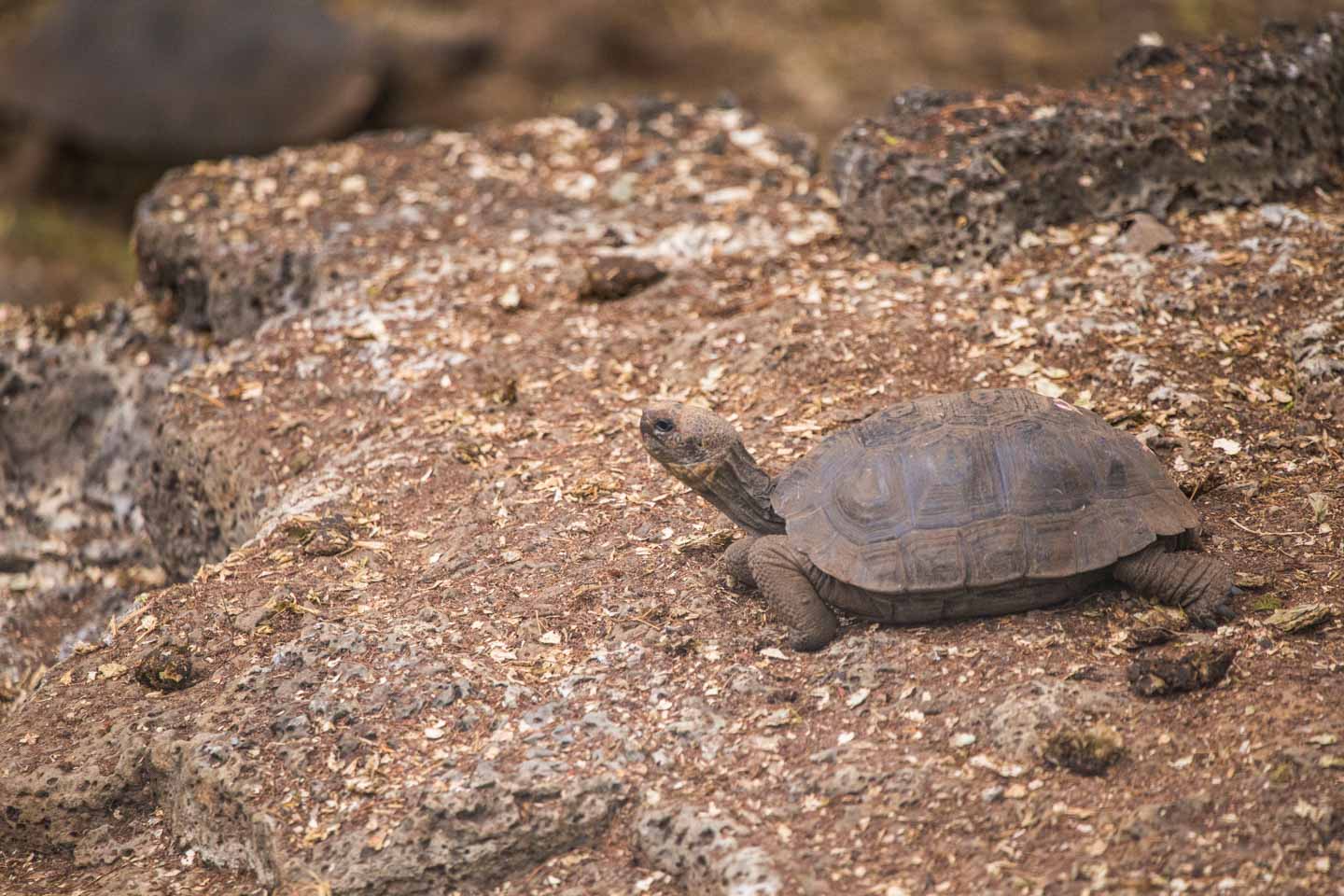
Giant tortoises are such funny creatures. They are incredibly slow – everything they do seems like it’s happening in slow motion. Even during feeding time, “rushing” to eat seemed unhurried.

I can’t remember how long we were there, but it was so entertaining to just watch them. I can only imagine back in the day when these creatures roamed and ruled all the Galápagos Islands.
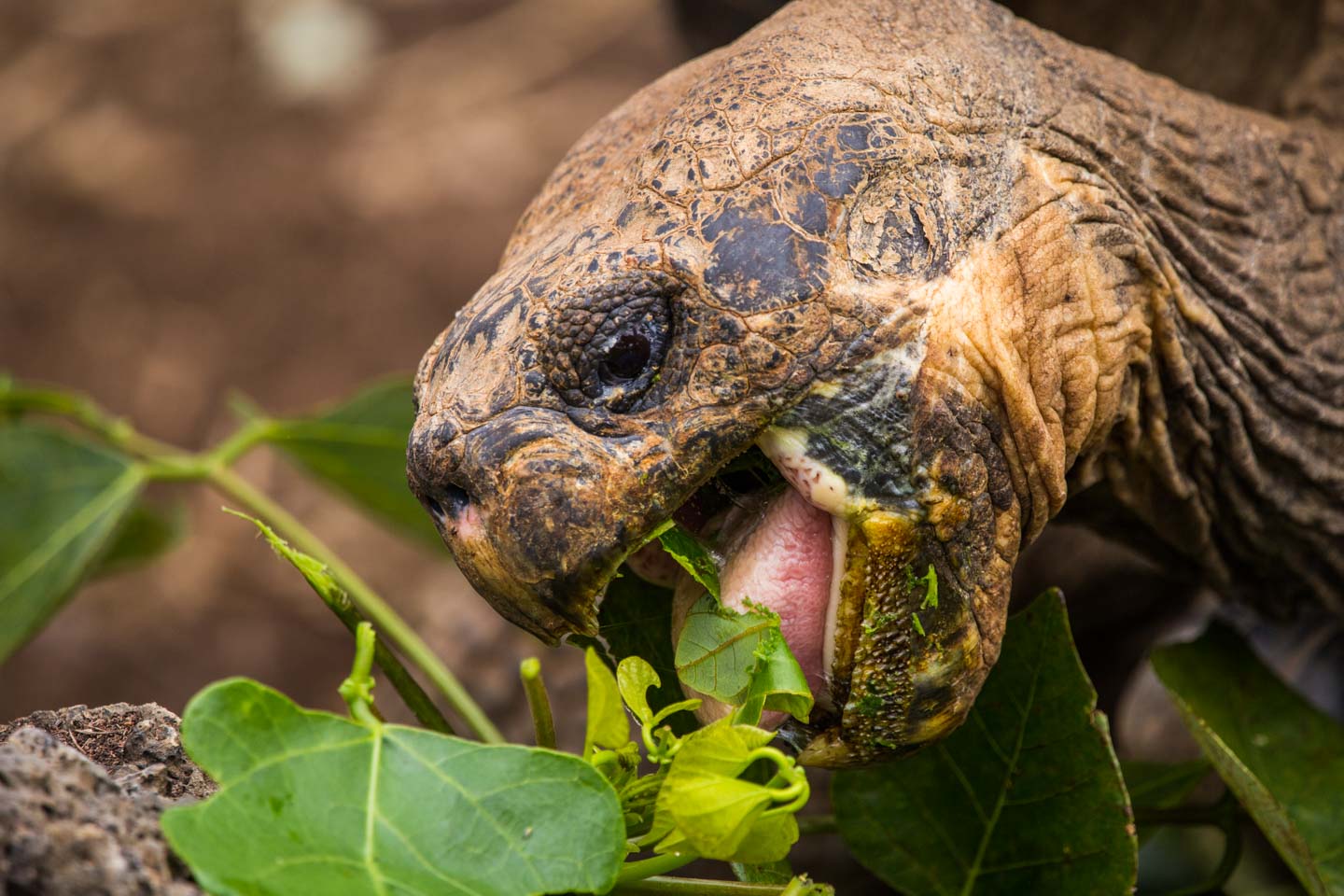
Besides the breeding center, the Reserva El Chato in the Santa Cruz highlands is a reserve where giant tortoises roam wild. We took a trip there to get up close and personal to these gentle giants. This was as close as I dared to get:

At the reserve there were giant tortoises everywhere. Giant tortoises chilling in the pond. Giant tortoises having a mud math. Giant tortoises sleeping. Giant tortoises eating. We were free to go around as we liked to observe and enjoy being in their presence.
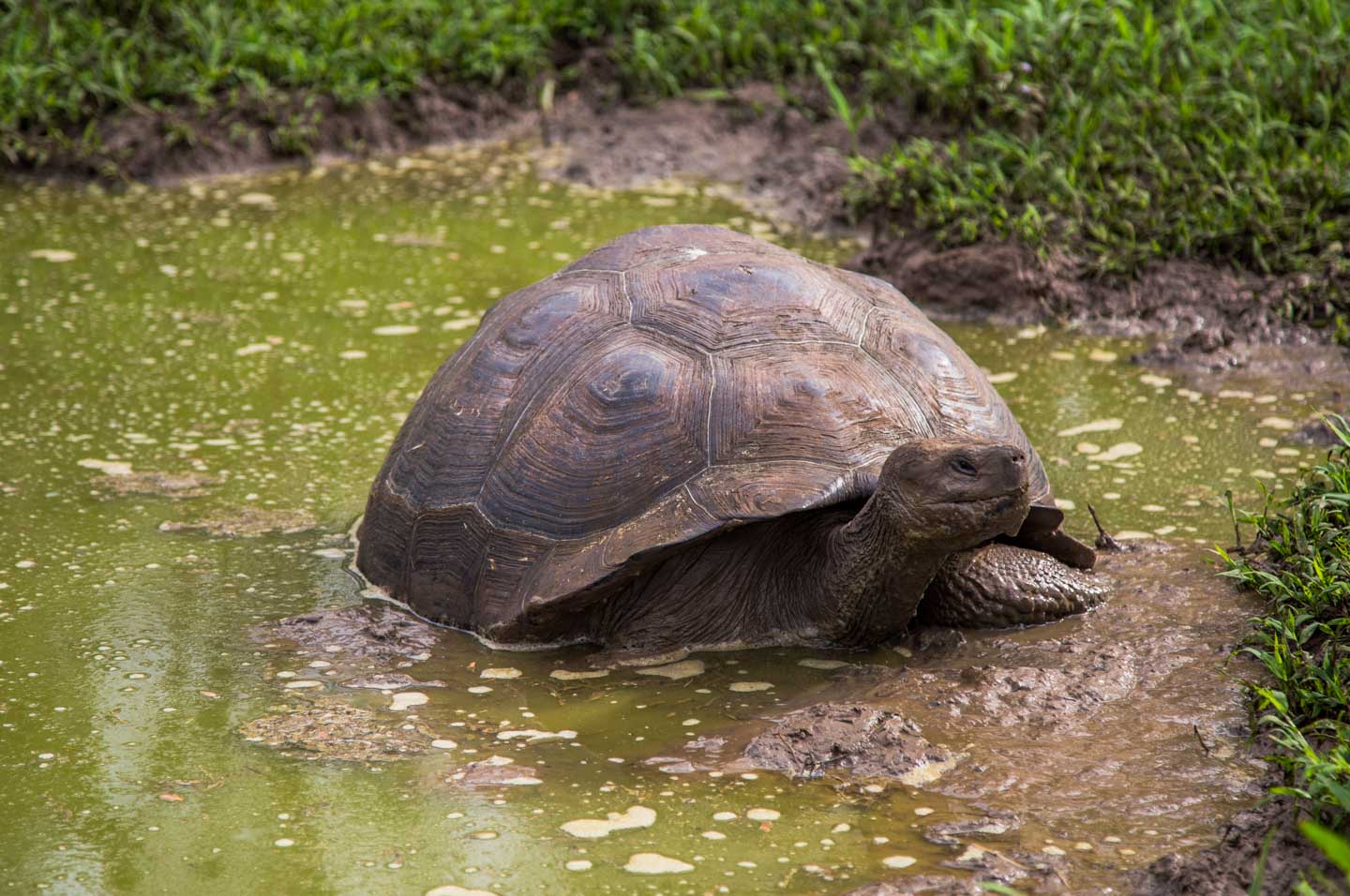
We even got lucky and saw two male giant tortoises fight over a female! This was definitely as aggressive as they get.
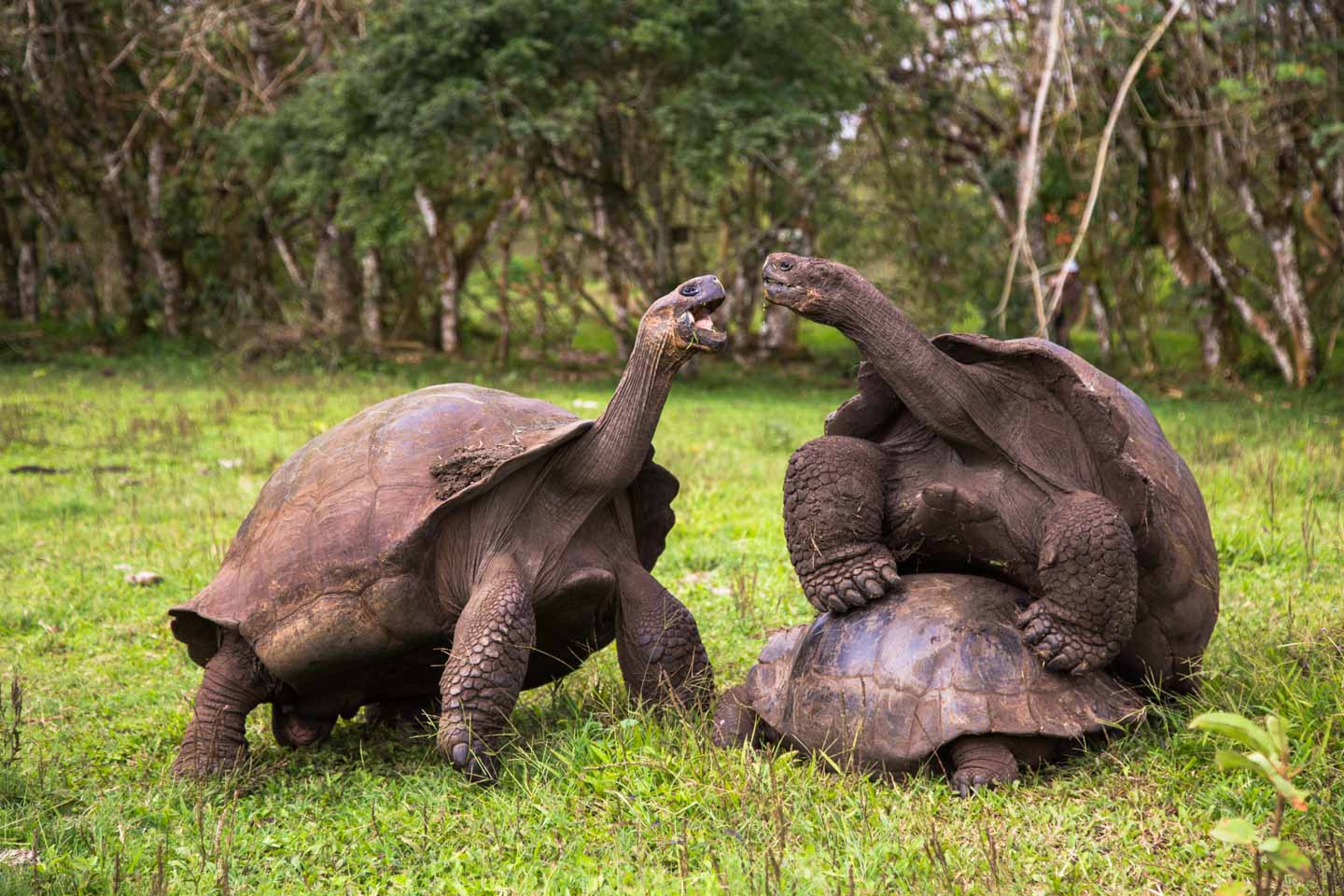
Santa Cruz definitely allowed us to enjoy giant tortoises to our hearts’ content. Even after all this exposure, I could still watch them for hours and hours.
Tortuga Bay
Just a short hike from Puerto Ayora was one of the most beautiful beaches in Ecuador, Tortuga Bay. The flour-like white sand gently massaged our feet as we walked the mile-long stretch across Playa Brava – the wavy and turbulent side of Tortuga Bay. The sand was so white it was hard to keep our eyes open at times!
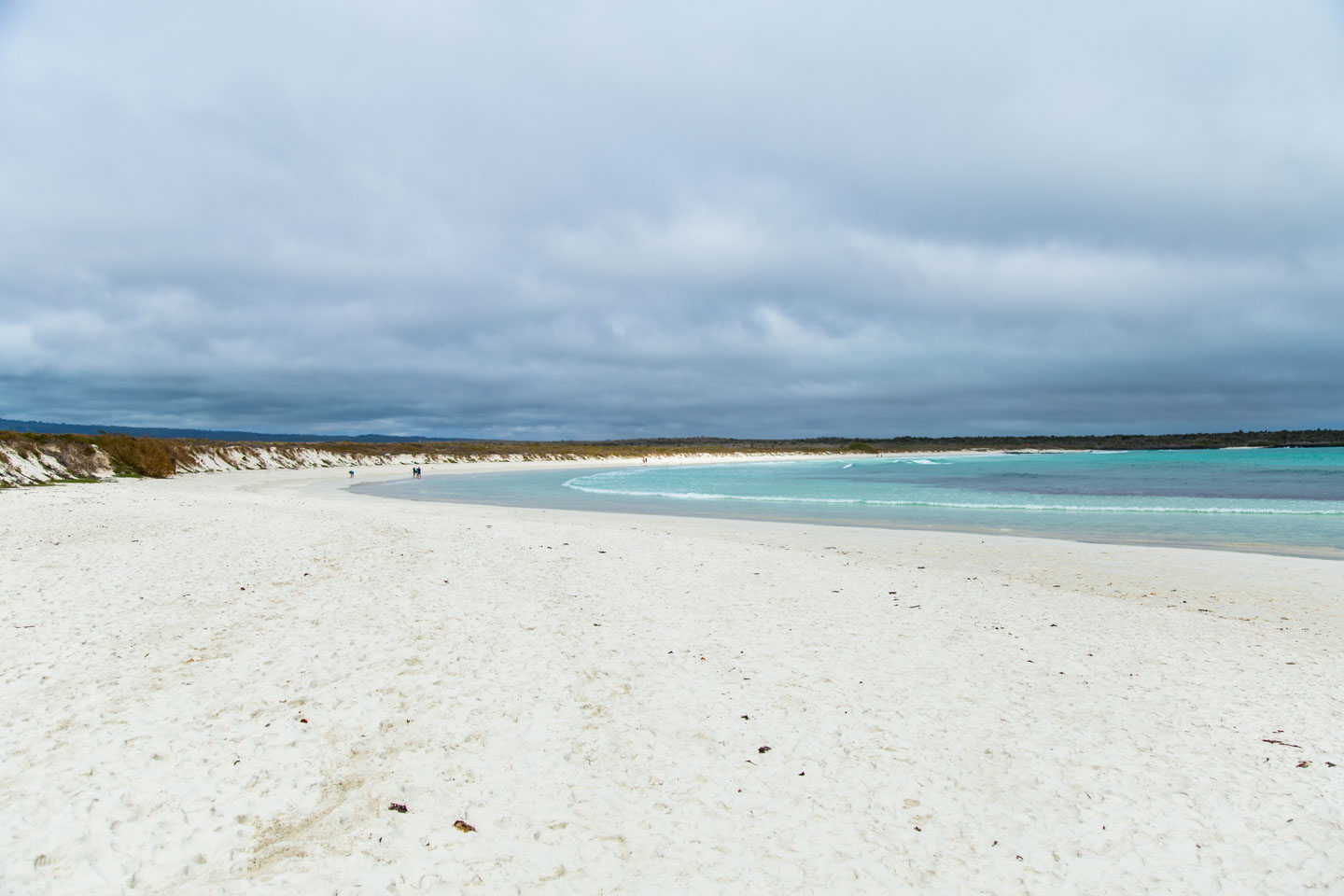
Along the way to the calm side of the beach, Playa Mansa, we saw dozens of marine iguanas just chilling under the sun.

At the end of the beach walk, we headed to a path fenced by prickly pear cacti and lava rocks.
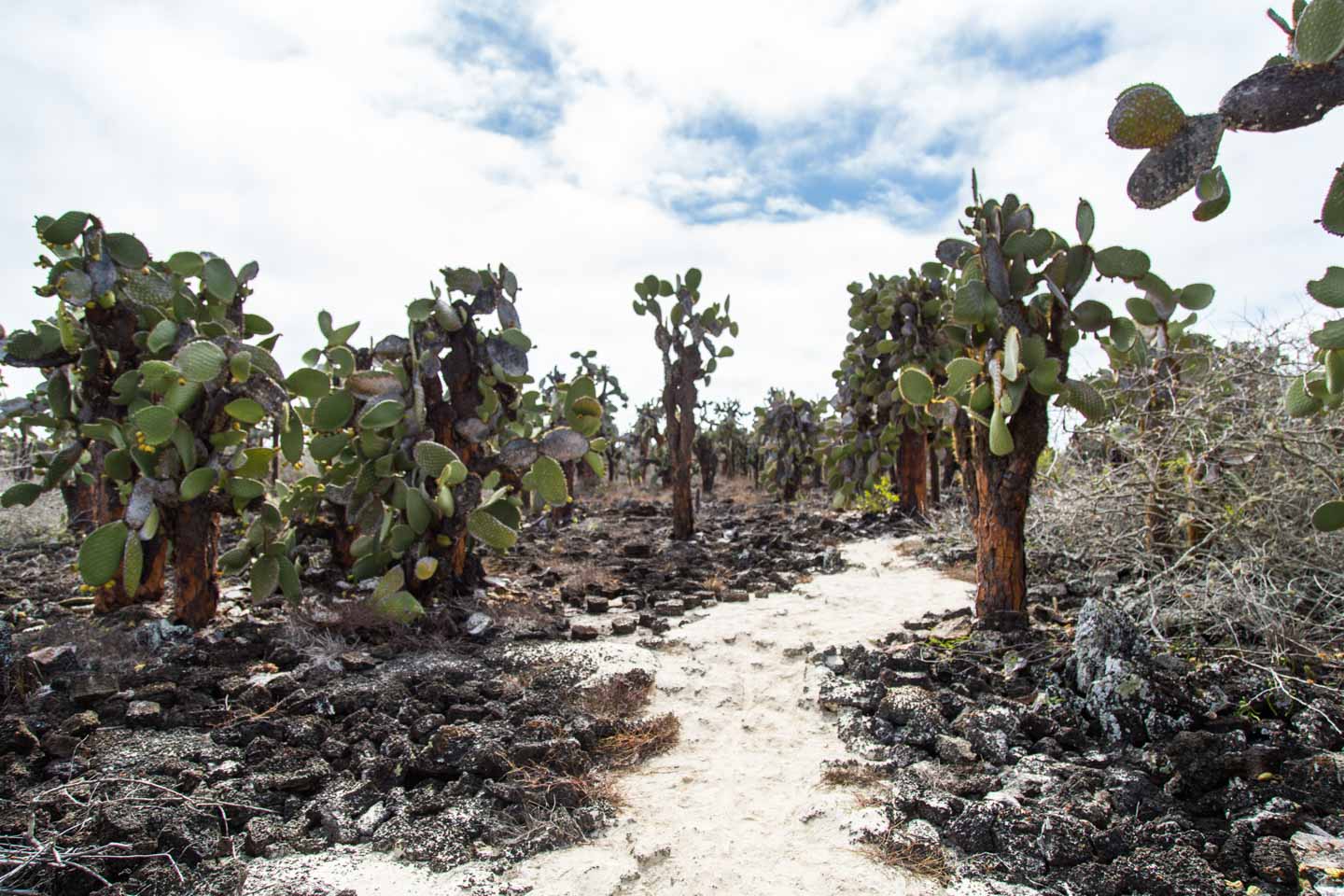
The overlook of Playa Mansa was a mesmerizing view. We even saw sharks swimming in the calm pools!

All in all, Tortuga Bay was worth the trek and a must-visit from Puerto Ayora.
Los Gemelos & Lava Tube
Sitting atop the Santa Cruz highlands were Los Gemelos, twin sinkholes created by the collapse of empty magma chambers. The craters were massive and surrounded by the scalesia forest, which had an abundance of lush green flora, mostly covered in moss due to the high and constant levels of humidity.

The forest was also home to eight species of Darwin finches that were hopping from branch to branch.

Not far from Los Gemelos, also at the Reserva El Chato, we had our second experience walking through a lava tube – the first being in Hawaii. This was a bigger and much more wilder version of it.

While Hawaii was a short and paved section of a lava tube, this one in the Galápagos had all sorts of rocky terrain and climbing on all fours. The tube rose to impressive heights at times and shrunk to as low as 50cm at one spot, forcing us to crawling through on our stomachs.

Overall, Santa Cruz was a great first base for us in the Galápagos Islands. Not only did we use it as a base to other islands, it had a little bit of everything on the island itself – wildlife, local culture, geological formations, gorgeous beaches. From here we moved to eastern Galápagos, basing ourselves on the island of San Cristóbal.

